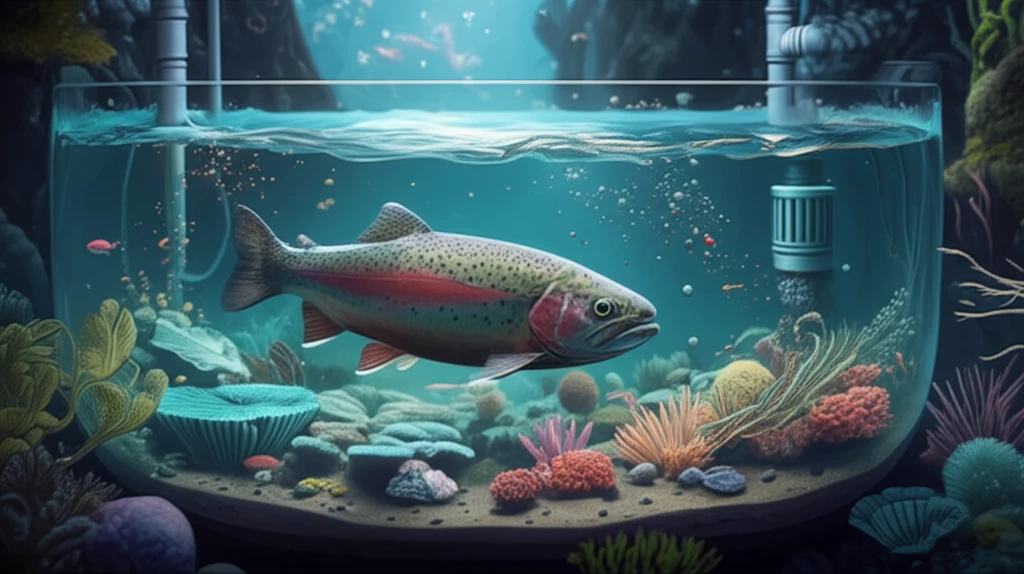
The Hidden Dangers in Your Fish Tank: Micro Particles and Your Trout's Health
"Uncover the surprising link between tiny particles, bacterial activity, and the well-being of rainbow trout in aquaculture. Learn how to maintain healthier fish and a cleaner system."
Recirculating aquaculture systems (RAS) are innovative setups designed to maximize water reuse, but this intensity can lead to an unintended consequence: the build-up of micro particles. These particles, smaller than 20 micrometers, come from various sources, including fish waste, uneaten feed, and sloughed-off material from biofilters. While these systems have filtration units, micro particles are often too small to be effectively removed, leading to their accumulation over time.
The problem with accumulating micro particles is their potential to negatively impact water quality. Suspended organic solids act as a feast for bacteria, driving up the biochemical oxygen demand (BOD) and carbon dioxide levels in the water. Some even speculate that these particles can cause physical harm to fish gills. It's a complex issue that demands a closer look.
Now, a groundbreaking study sheds light on the real-world conditions of micro particle accumulation in Danish rainbow trout farms. Unlike previous studies conducted in controlled, experimental settings, this research investigates commercial-scale operations to understand the true scope of the issue.
The Microscopic Culprits: Understanding Micro Particle Dynamics

The study, conducted across seven commercial rainbow trout farms in Denmark, analyzed water samples from twenty separate RAS units. The aim was to measure the levels of micro particles (numbers, volume, and surface area) and bacterial activity, alongside key water quality indicators. This comprehensive approach allowed researchers to paint a detailed picture of the factors at play in these systems.
- High Variability: Even seemingly similar RAS units within the same farm showed drastically different levels of micro particles.
- Bacterial Hotspots: Micro particles provide ample surface area for bacteria to colonize, leading to increased bacterial activity.
- Filter Effects: Biofilters tend to trap particles, while drum filters seem to reduce particle volume but increase particle numbers and surface area.
- Commercial Scale: The study provides a crucial baseline for micro particle levels in real-world trout farms.
Implications for Sustainable Aquaculture
This study underscores the need for careful management of micro particle levels in recirculating aquaculture systems. By understanding the dynamics of these particles and their relationship with bacterial activity, fish farmers can implement strategies to improve water quality and promote the health and well-being of their trout. Further research is needed to determine optimal particle levels and effective methods for their control, ensuring the long-term sustainability of aquaculture practices.
